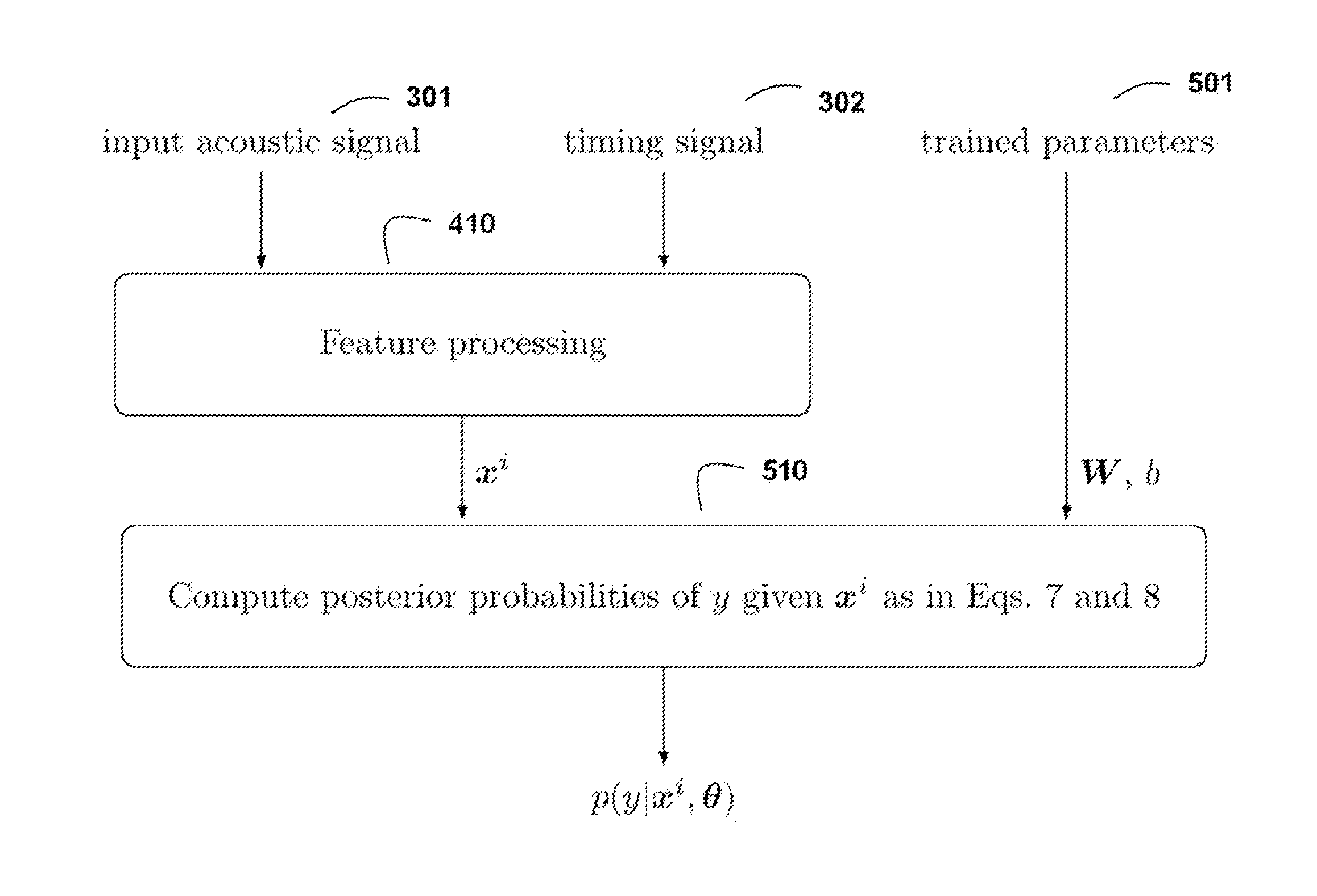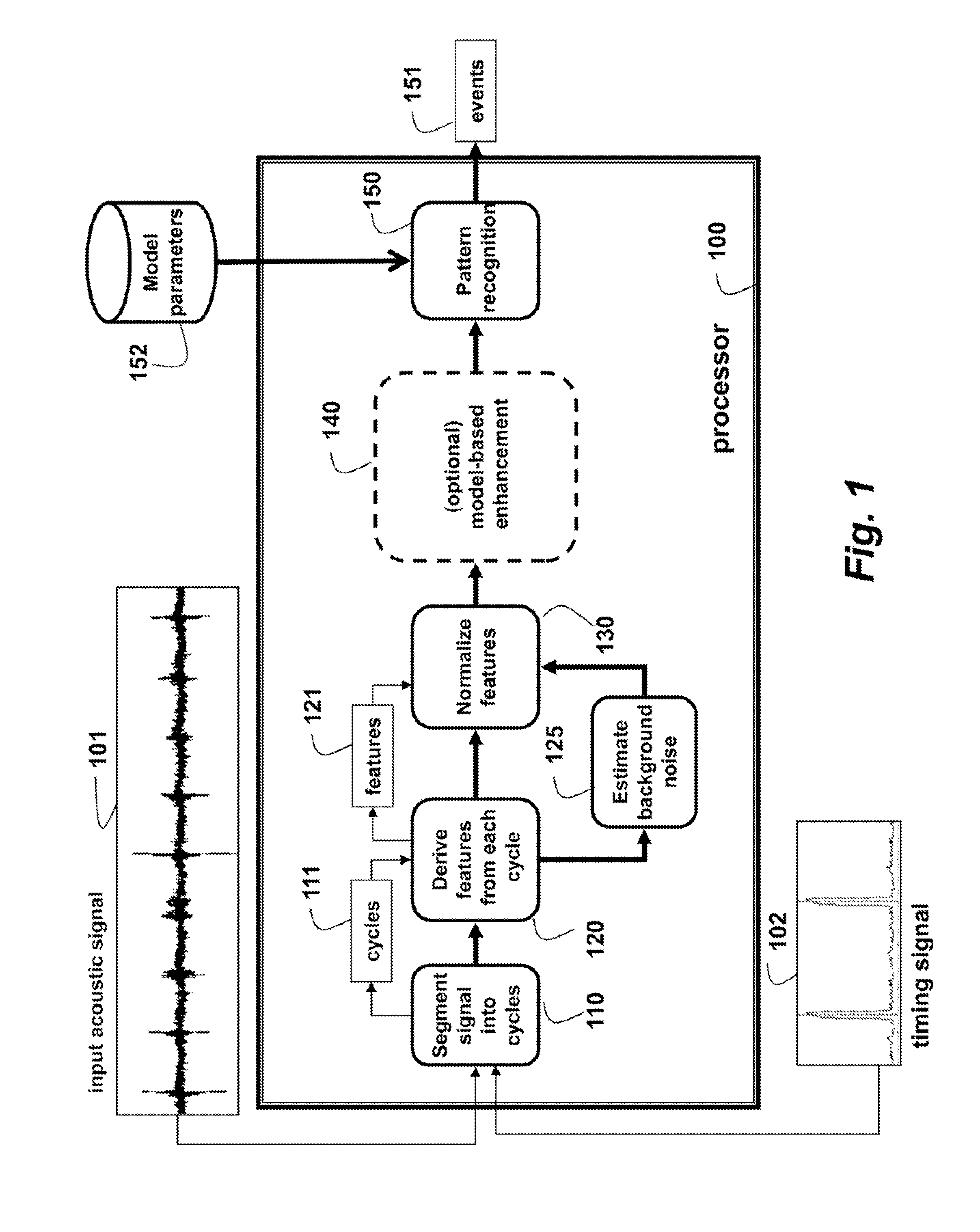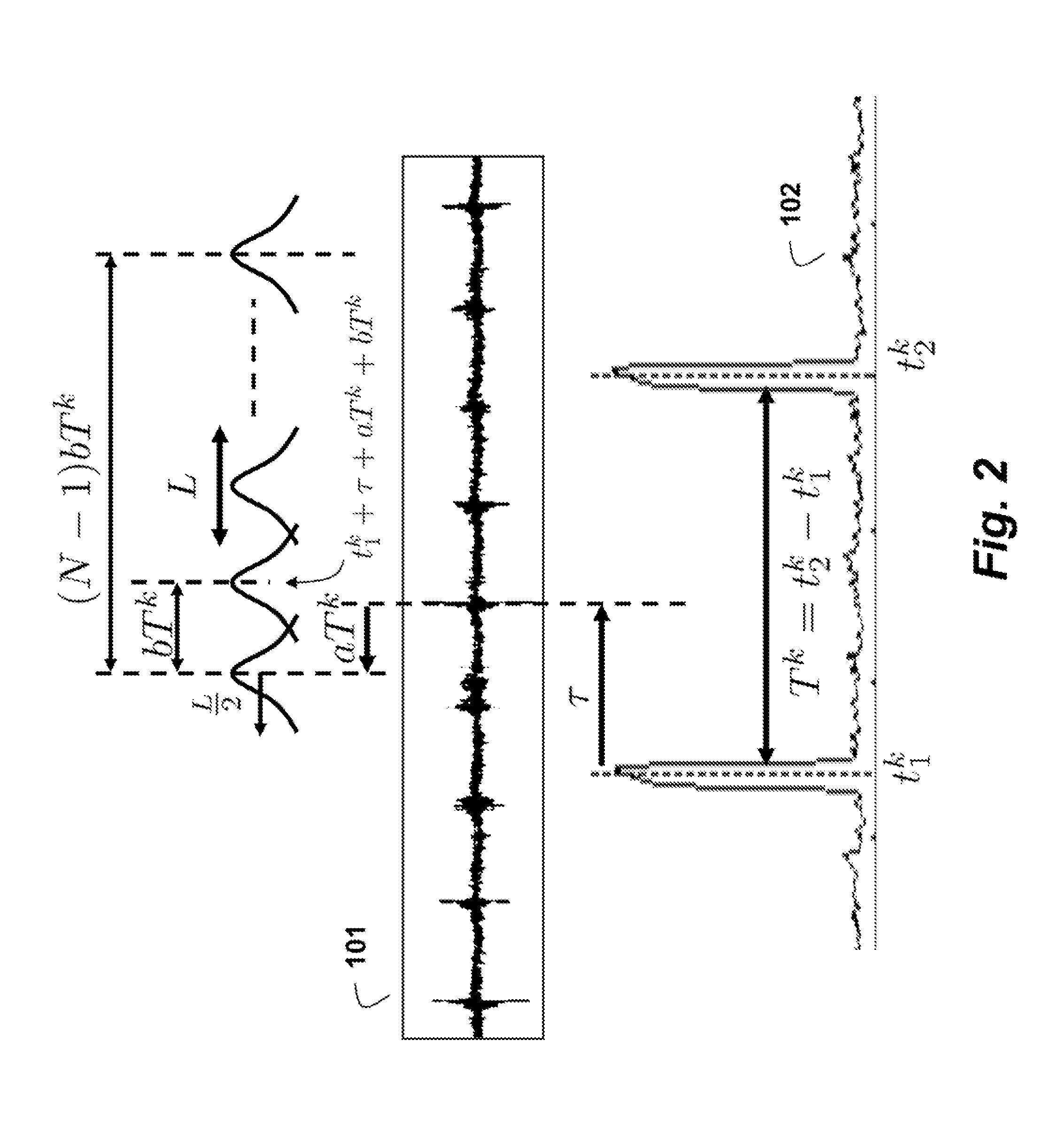Method and System for Detecting Events in an Acoustic Signal Subject to Cyclo-Stationary Noise
a technology of cyclostationary noise and acoustic signal, which is applied in the direction of electric control, instruments, machines/engines, etc., to achieve the effect of enhancing features
- Summary
- Abstract
- Description
- Claims
- Application Information
AI Technical Summary
Benefits of technology
Problems solved by technology
Method used
Image
Examples
Embodiment Construction
[0015]As shown in FIG. 1, the embodiments of the invention provide a method and system for detecting events in an accoustic signal 101 subject to cyclo-stationary noise,. For example, the signal is acquired from a running engine or machine with an air microphone.
[0016]As shown in FIG. 1, the embodiments of our invention provide a method and system for detecting, in the acoustic signal 101, events subject to cyclo-stationary noise. First, the signal is segmented 110 into cycles 111. A timing signal 102 can be used as side information for the segmenting. For each cycle, features 121 are derived 120 from regions distributed within the cycles. For example, the features can be obtained from spectrograms.
[0017]The features have fixed dimension, such that the timing of the features is relative to the cycle time rather than an absolute time. Background noise is also estimated 125. Then, the features are normalized 130 using the estimate of the cyclo-stationary background noise. Optionally, ...
PUM
 Login to View More
Login to View More Abstract
Description
Claims
Application Information
 Login to View More
Login to View More - R&D
- Intellectual Property
- Life Sciences
- Materials
- Tech Scout
- Unparalleled Data Quality
- Higher Quality Content
- 60% Fewer Hallucinations
Browse by: Latest US Patents, China's latest patents, Technical Efficacy Thesaurus, Application Domain, Technology Topic, Popular Technical Reports.
© 2025 PatSnap. All rights reserved.Legal|Privacy policy|Modern Slavery Act Transparency Statement|Sitemap|About US| Contact US: help@patsnap.com



